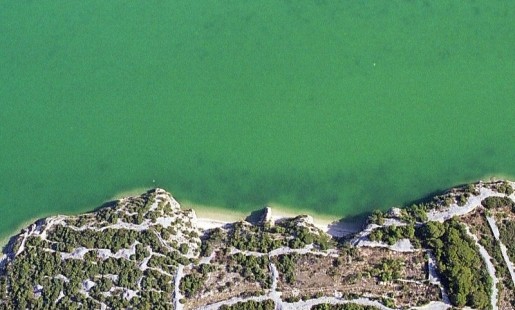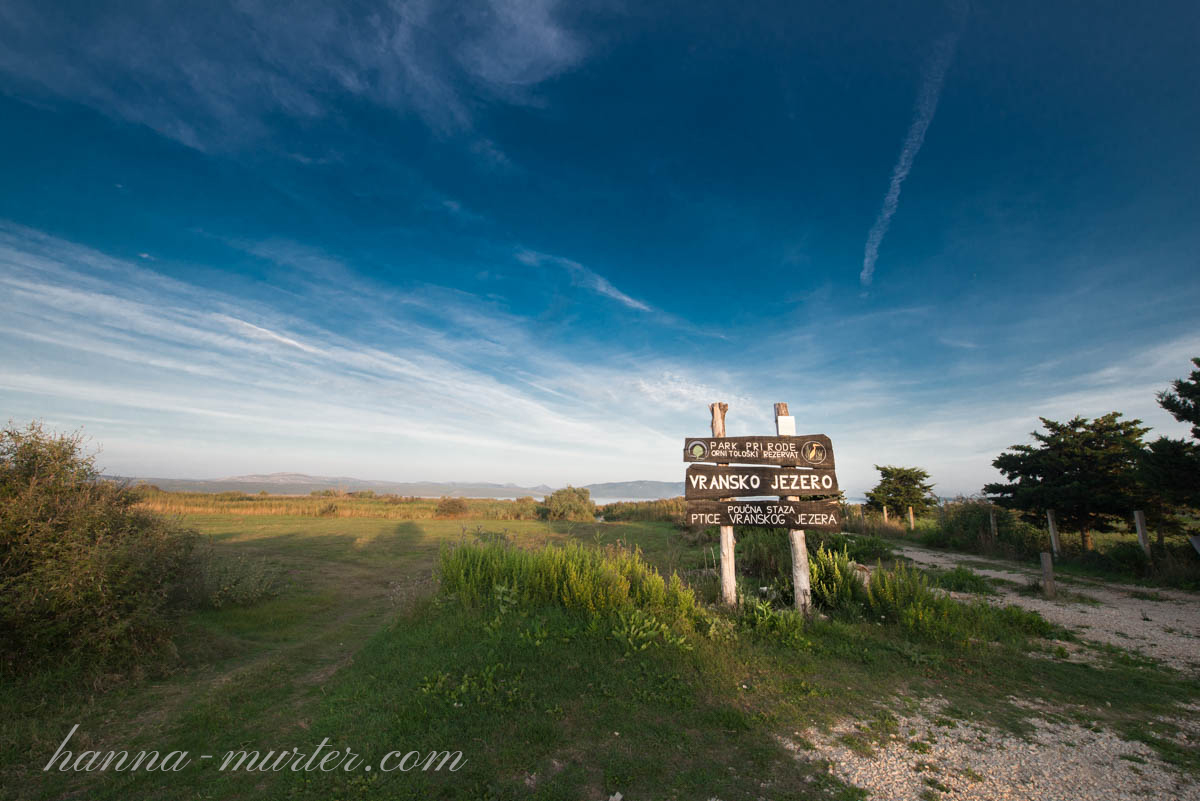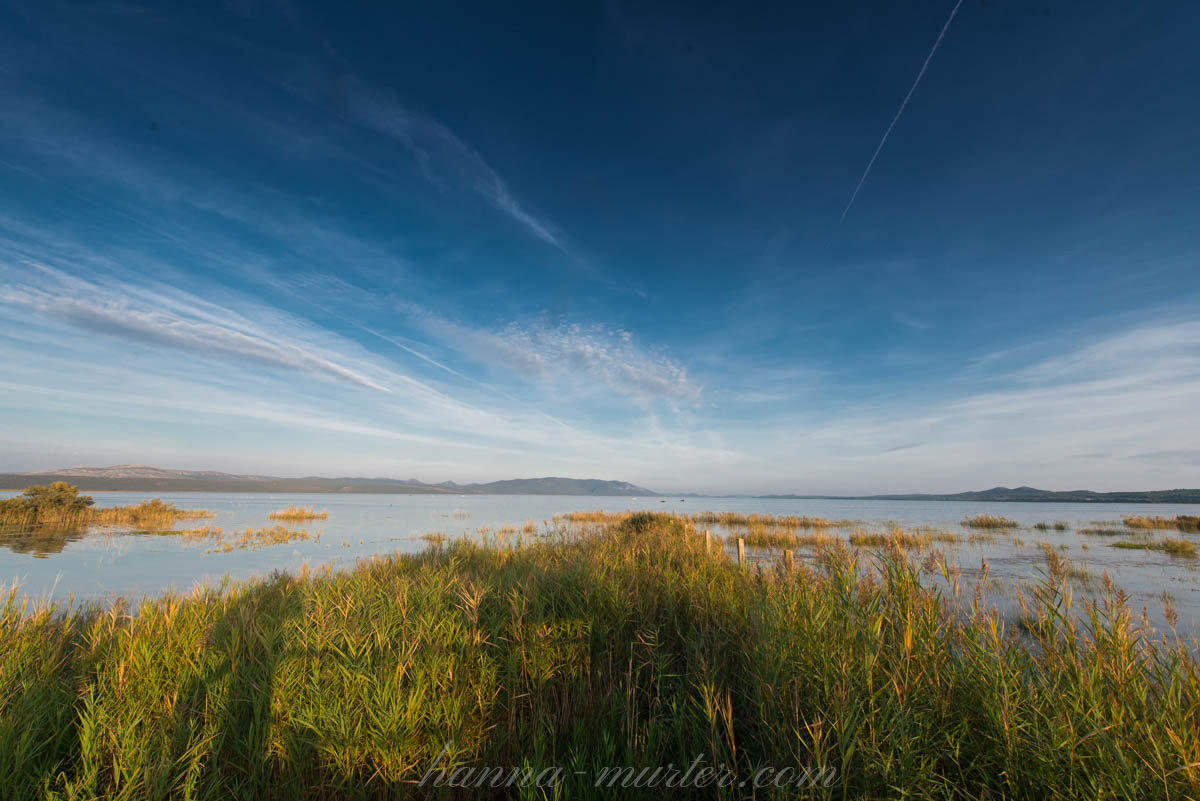
Lake Vrana
About Lake Vrana
Travelling along the Adriatic main road towards the northern Dalmatia between two historical cities of Zadar and Šibenik, you will come across a natural phenomenon – the two equally beatiful and yet so very different azures. On one side you will see the well indented Adriatic coast, famous for its inviting beauty and clean sea, and on the other side you will see the largest natural lake in Croatia.
Because it is one of the rare natural habitats of waterbirds as well as because of its fresh water springs and biodiversity, the Vrana Lake and its surroundings have been declared a nature park on July 21st, 1999. The park’s limits are between Pirovac and Pakoštane. The park stretches across 57 km2, 30,02km2 of that being the lake area itself, which streches in the direction from the North-West to the South-East paralelly to the sea coast, from which it is in some places less than a kilometer apart. The lake is unique for its postition and characteristics not only in Croatia but also in other parts of Europe. It is in fact a karst valley filled with brackish water and is below sea-level.
The predominating characteristic of the park is its special Ornithological reserve, which received its title for its well preserved huge reed-patch in the north-western part of the lake, with its immense biodiversity, and for its extraordinary scientific and ecological value ever since 1983. The reserve has been included to the list of Important Bird Areas in Europe and is a potential Ramsar site.

It is an unusual compromise and connection of land and water which offers a refuge to diverse species of plants and animals, offering them all that its neccessary for life. Overgrown with grass, sedge, rush and reed it looks like field with shallow ponds scattered all over it and covered with permanent flowers of vibrant colours and with many butterflies, dragonflies and other different insects which enable the birds to stay in the reserve and in the park throughout the year. Hidden in the reed, bird lovers can experience watching the birds nesting and taking care of their chicks. Vrana Lake is a hot-spot with tremendous diversity of ornithofauna of 249 recorded bird species, of which 102 nest in the park area. Of these nesting birds, four are considered Endangered on the European level and seven on national level. For some of these birds Vrana Lake is the only nesting area in the entire Mediterrenean part of Croatia. The park area is also an important resting and feeding place for a whole range of endangered European species. More than 100 000 waterbirds come here to spend the winter.
The birds are not the only valuables of the park. The lake is full of biologically important fish species, such as the Mediterranean species of the Rudd (Scardinius erythrophtalamus ). This area possesses also many other special features which you will discover on further expeditions.

In the old days Vrana Lake used to be known as „Vedro blato“. Its cultural and historical monuments date from as far back as 2000 years B.C. Vrana Lake Nature Park still hides many secrets and is a constant source of scientific discoveries which the park is trying to explore and present to the world, with the help of experts dealing with different fields of research. There are few areas in the world where you can simultaneously explore three very different environments and landscapes: the sea coast and the rich archipelago behind it, the Mediterranean swamp with its unique landscape and ecosystem, and just behind the hill the rural idyll of the villages of Ravni kotari.
When you visit us, you will be far away from civilization and yet so near it. Come and enjoy the world of nature of our park with genuine curiosity and joy, and you will find the peace and satisfaction which comes from mergence with nature.
Lake Vrana Park’s Uniqueness
- The largest lake in Croatia
- Along the Lower Neretva, it is the only large swamp in the Mediterranean part of Croatia
- Special Ornithological Reserve
- Habitat of four Endangered bird species on European level
- Habitat of seven Endangered bird species on national level
- The biggest nesting population of the Pygmy Cormorant (Phalacrocorax pygmeus) in Croatia
- One of the last nesting areas for the Purple Heron (Ardea purpurea), the Great White Egret (Egretta alba), the Little Egret (Egretta garzetta), the Pygmy Cormorant (Phalacrocorax pygmeus)
- Habitat for species included in the Bonn Convention on Migratory Species of Wild Animals
- Hot-spot – diversity of ornithofauna (249 species, 102 nesting species)
- Number of waterbirds spending the winter on the lake exceeds 100,000 individuals
Habitat for possibly the only population of the Mediterranean species of the Rudd (Scardinius erythrophtalamus) - Rich history (first finds date from 2000 years BC).
MAP&Directions
